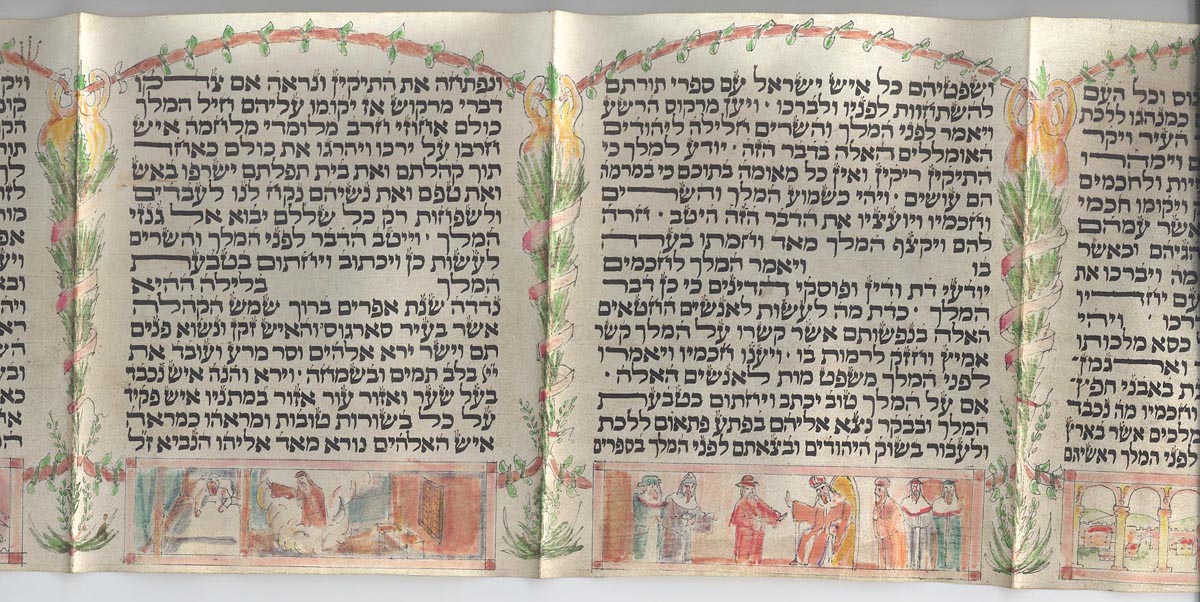Torah Scrolls were always written in the "Gvil", the outer part of a fully-grown kosher animal's skin - sheep, goat, deer and so on
(see image in the right, credit to the Gewil Institute). That's how Moshe Rabbeinu, the Ran and Rambam wrote their own Sifrei Torah and that was the only parchment used by Jewish scribes throughout the centuries.
As I wrote in my
post about the Kulmus, around 700 bce the feather quills started to become immensely popular among scribes in general and, specially in Europe, many sofrim started to favor these quills instead of the "original" reed quills. The parchment was also improved and the European scribes started to write not on the outer, but on the inner part of the animal's skin, because it was more smooth and thus suitable for the delicate feather quills
(reed quills are more sturdy and can write in either Gvil or Klaf. Feather quills don't write well in Gvil). This inner part of the animal's skin is called "Klaf" (קלף) and eventually all Ashkenazi scribes switched for this parchment and the feather quill altogether, for both Mezuzas and Torah Scrolls. The Gevil went "out of fashion", so to speak.
The Ashkenazi Rabbis accepted these changes and an all Ashkenazi Torah Scrolls are written in Klaf until this very day.
But the Sephardi world was less influenced by these changes and the Sefardi sofrim kept using reed quills and Gvil parchement, like the original Sifrei Torah. However, as the Sephardi Jews started to leave the Arab world it seems that they were influenced by the Ashkenazi way of writing and many Sefardi scribes today do use feather quills and Klaf, a surprising fact. Virtually all parchments produced in Israel are "Klaf", not "Gvil/גביל".
Last week I luckily found a great Yemenite website which is pushing for the "resurrection" of the Gvil parchment (read "
The Gewil Torah Scrolls are Popular once Again" - take it with a grain of salt...). The Yemenite Jews follow the Rambam's customs blindly and as I noted, the Rambam wrote his own Sefer Torah in Gevil, so this campaign really makes sense. But they claim that a Rabbi Mordechai Eliahu, the former Sephardic Chief Rabbi, has a Gvil Sefer Torah, so I guess many Sephardim will like this campaign as well since their older Sifrei Torah are also written in Gvil.
It's easy to differentiate between a Gvil Torah Scroll and a Klaf one. The Gvil scroll is dark in the inside (where the text is written) and lighter in the reverse side; the Klaf scroll is the exact opposite.
 |
| Yemenite Gewil Scroll (note the reed quill in the scribe's hand) |
 |
| Ashkenazi scroll. Note the white klaf color |
I was so fascinated by this story that I decided to make a field trip to a klafim factory in Jerusalem. I saw the whole process and the owner explained to me that besides all the Gewil vs. Klaf story there was another interesting development.
Until very recently, all klafim were made out of skin of fully-grown animals. But the Rabbinic authorities always praised the skin of a "Shlil" (שליל), or unborn animal, even tough it was unpractical to write a Sefer Torah from a Shlil - you need dozens of fetuses and that was hard if not impossible to find. But 30 years ago someone in the klafim business heard that the big slaughter houses in the US and Europe had dozens of "shlil" everyday in their factories and they didn't have any use from them. Since then all the klafim factories buy these shlils and make a super-smooth klaf out of it. So our klafim became even better!
The klafim process, as I saw it:
1- Put the skins in chemicals for 4 weeks.
2- Take it out and remove the hairs.
3- Hang it for a few days so it can dry.
4- Stretch it for a few days.
5- Remove the remaining impurities.
6- Cut the Klaf to the desired thickness and size.


























































